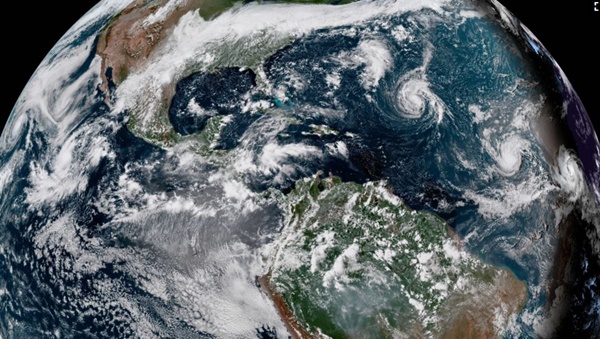WITH INFORMATION OF VOANEWS
Emergency officials are urging millions of residents along the southeastern U.S. coast to finish preparations ahead of the onslaught of Hurricane Florence. The storm is expected to make landfall later this week, unleashing damaging winds and life-threatening amounts of rain.
Florence is currently a Category 4 storm with maximum sustained winds of 215 kilometers per hour. Forecasters do not expect Florence’s strength to change much before it comes ashore near the North Carolina-South Carolina border.
At last report, the massive system was about 855 kilometers southeast of Cape Fear, North Carolina. The National Hurricane Center said Wednesday, “Florence is forecast to be an extremely dangerous major hurricane when it nears the U.S. coast.”
“This is not going to be a glancing blow,” the Federal Emergency Management Agency’s Jeff Byard said Wednesday in Washington.
Byard again urged residents in danger zones to heed warnings to either evacuate or hunker down. “There will be disruptions in our services,” he said. “The power will go off. Infrastructure will be damaged. Homes will be damaged or destroyed. So, again, the time to act is now.”
There is particular concern about the storm lingering once it nears the coast and moves onshore, allowing it to dump torrential amounts of rain in parts of North Carolina, South Carolina and Virginia. That happened last year when Hurricane Harvey dumped more than 150 centimeters of rain on the Houston, Texas area.
The National Hurricane Center expects Florence’s rainfall totals to be around 50 to 75 centimeters, with some areas receiving as close to 102 centimeters of rain.
The soaked ground and fierce winds could bring down trees and power lines and knock out electricity for weeks.
The president signed emergency declarations for the Carolinas and Virginia, a move that frees up federal money and resources. He also urged residents who live in the path of the storm to “get out of its way. Don’t play games with it. It’s a big one.”
So far, more than one million people along the coasts of North and South Carolina and southern Virginia have fled. They have faced gas shortages at some stations, while those who have chosen to stay put are clearing store shelves of emergency supplies.
North Carolina Governor Roy Cooper had a direct message for residents who decided against evacuating.
“This storm is a monster. It’s big, and it’s vicious,” he said. “The waves and wind this storm may bring is nothing like you’ve ever seen. Even if you’ve ridden out storms before, this one is different. Don’t bet your life on riding out a monster.”
Experts say this could be the strongest storm to hit the Carolina coast in more than 60 years.
Parts of the southeastern coast that are not under hurricane warnings are under tropical storm or storm surge warnings, meaning life-threatening floods are possible.



